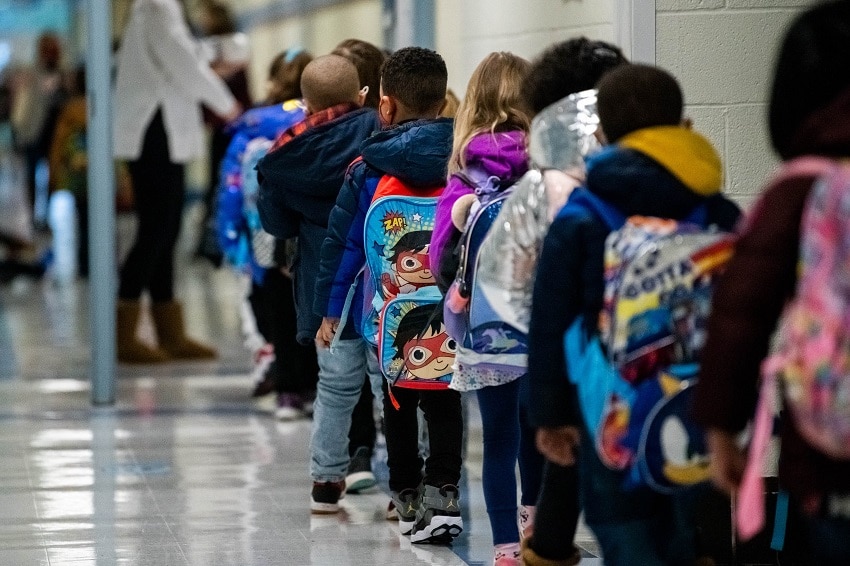As debates around reopening schools warm up, teachers and parents can’t manage to disregard the social and emotional crisis threatening to overwhelm America’s children.

A current report from Mental Health America informs a saddening story: the proportion of youngsters aged 11-17 who utilized anxiety and depression screenings in 2020 rose 9% over the prior year. And that’s just those who requested for help: it doesn’t take into account youngsters with underlying emotional and developmental disabilities exacerbated through the pandemic, nor will it wholly capture the disproportionate aftereffect of COVID-19 on students of color and individuals within-resourced communities.
What’s obvious, however, is the fact that 2020 has exacerbated the crisis of diminishing empathy among American teens. “As anxiety increases, empathy wanes,” Dr. Michele Borba noticed in her bestselling book, “Unselfie.” “It’s difficult to sense of others when you are in ‘survival mode.’” This “all-about-me” attitude, decades of studies have shown, results in more bullying, dishonesty, suicide and college violence.
These problems can come to some mind when students go back to physical classrooms. Regrettably, educators – exhausted and overwhelmed themselves – have battled to create room for that social and emotional learning (SEL) programs that may address students’ mental wellbeing and combat narcissism. In This summer, market research demonstrated just 7% of educators were ready to satisfy the SEL requirements of students during COVID-19.
Paige Gagerman, a higher school student in Illinois, summed up by doing this: “I believe that all of the hope and all sorts of existence continues to be drained from me and my peers, and extremely the teachers, too.”
Which may be true – but getting seen firsthand the outcome quality SEL programming might have, even throughout a global pandemic, In my opinion there’s hope. If educators take action now, they are able to supply the support students need because they go back to classrooms. Here’s the things they should bear in mind.
SEL programming builds community and could be done briefly
The final factor today’s inundated teachers wish to hear is the fact that they’ll need to educate another curriculum. Frankly, it feels impossible.
They have to know you will find programs making it simple to integrate SEL to their classrooms. And it is possible remotely or perhaps in a hybrid fashion, too: throughout the pandemic, my nonprofit The Nora Project provides teachers with customizable slides, digital worksheets, virtual coaching, sources to assist them to integrate SEL to their core subject curriculums, and, beginning this March, a totally free web seminar series on building inclusive classroom culture.
Though some might’ve thought SEL would prove harder inside a remote setting, teachers frequently say it’s their students’ favorite area of the day. As Samantha Uribe, a college counselor at Haugan Elementary (a Chicago Public School) explained, “My sixth-eighth graders normally do not have their cameras on and teachers are teaching to blank screens. But during SEL sessions they are doing – they’re really participating in conversations and discussing their tales.”
Too frequently, SEL programs simply look into the boxes – but aren’t dynamic enough to possess real impact
To satisfy SEL standards, schools frequently choose generalized programs to “check all of the boxes.” These programs usually center around unlikely role-playing exercises or out-of-date video simulations, and therefore are problematic for any couple of reasons: first, they are usually calibrated solely for any general education population, departing a substantial quantity of students through the wayside and 2nd, they are usually boring and ineffective.
Now more than ever before, schools should select programs which are creative, inclusive, student-driven, experiential, and multidisciplinary. For example, our STEMpathy Club program empowers students of abilities to operate together to create and implement projects which make their schools more inclusive. We’ve had students redesign playgrounds, develop hallway posters representing disability diversity, and make physical stations. This sort of learning engages students, calls on their own communal feeling, and builds equitable, values-driven school cultures.
Situation in point: a year ago John Gensic, a higher teacher in Indiana, generate a virtual STEMpathy discussion group where he hosts loudspeakers on disability and inclusion guidelines. The audience is attended not just by an assorted number of students, but by most of the school’s educators and managers.
Following a lens of disability justice and skill-inclusive thinking might help
In fact all students coming back to classrooms this season is going to be experiencing invisible disabilities. We have to prepare to center all student needs.
Infusing inclusive teaching practices along with a disability justice framework into SEL instruction might help. Disability justice values collective access and interdependence – cooperating, using a range of tools, to meet the requirements of. SEL curriculums that embody this method through differentiated, co-trained, values-driven instruction produce a safe space for vulnerability and engender what students need first and foremost: empathy on their own yet others.
COVID safety:Unvaccinated teachers much like me have reason to bother with reopening schools
When students go back to the classroom, they’ll need this supportive community. To obtain there, teachers will require SEL curriculum that fits as soon as.
In my opinion within the impact truly inclusive SEL might have – as well as in the educators who make that impact happen. As Neli Garcia, a parent or gaurdian from West Chicago, told an instructor lately following a virtual group SEL lesson: “‘My boy stated, ‘You understand what mother? I really like my disability! I believe it is good that I’ve got a disability.’”
Garcia started to tear up, and thus her boy requested her, “Why are you currently crying?”
And she or he told him, “I’m just happy that you simply love yourself.”
